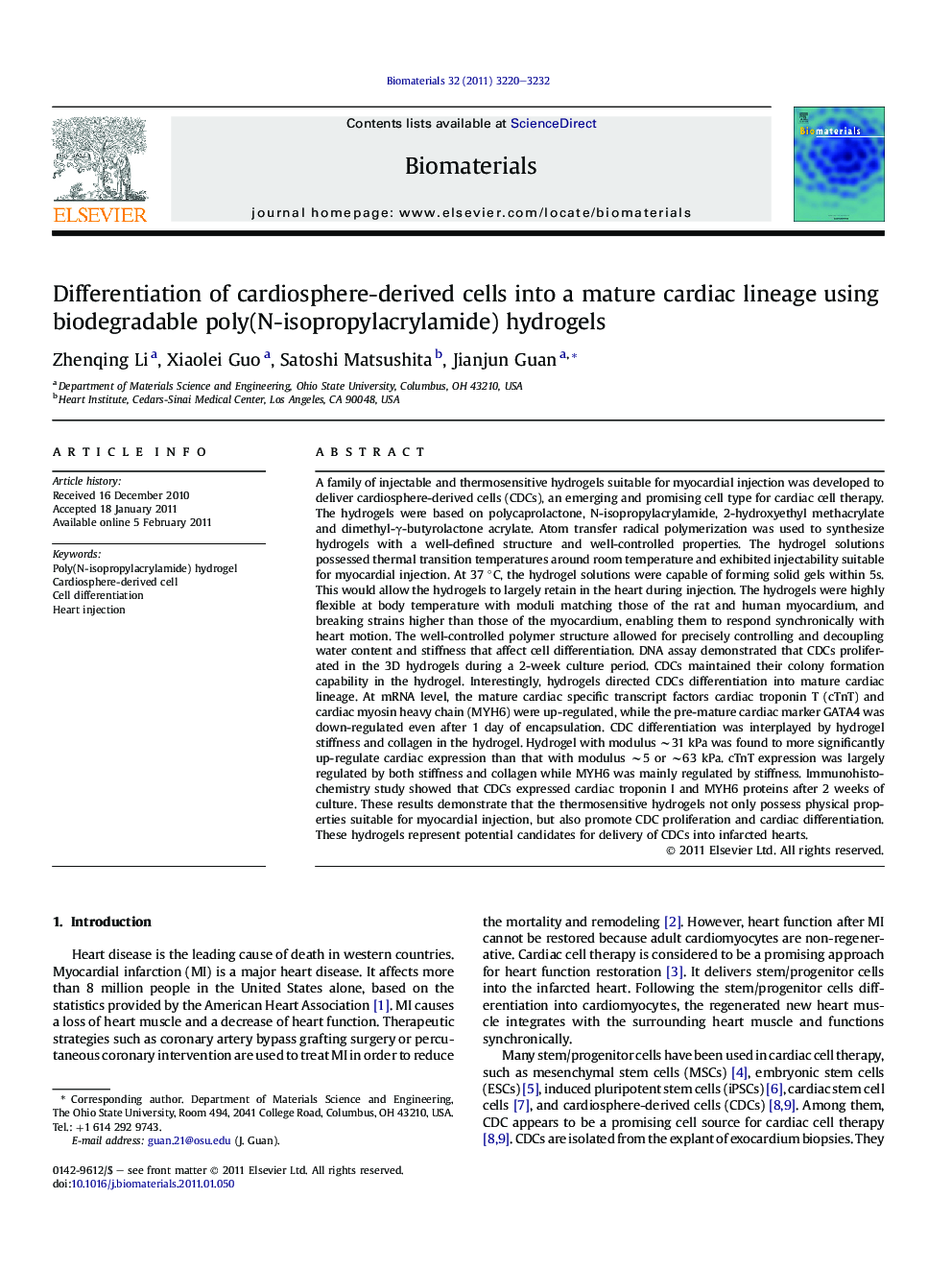| کد مقاله | کد نشریه | سال انتشار | مقاله انگلیسی | نسخه تمام متن |
|---|---|---|---|---|
| 8029 | 574 | 2011 | 13 صفحه PDF | دانلود رایگان |

A family of injectable and thermosensitive hydrogels suitable for myocardial injection was developed to deliver cardiosphere-derived cells (CDCs), an emerging and promising cell type for cardiac cell therapy. The hydrogels were based on polycaprolactone, N-isopropylacrylamide, 2-hydroxyethyl methacrylate and dimethyl-γ-butyrolactone acrylate. Atom transfer radical polymerization was used to synthesize hydrogels with a well-defined structure and well-controlled properties. The hydrogel solutions possessed thermal transition temperatures around room temperature and exhibited injectability suitable for myocardial injection. At 37 °C, the hydrogel solutions were capable of forming solid gels within 5s. This would allow the hydrogels to largely retain in the heart during injection. The hydrogels were highly flexible at body temperature with moduli matching those of the rat and human myocardium, and breaking strains higher than those of the myocardium, enabling them to respond synchronically with heart motion. The well-controlled polymer structure allowed for precisely controlling and decoupling water content and stiffness that affect cell differentiation. DNA assay demonstrated that CDCs proliferated in the 3D hydrogels during a 2-week culture period. CDCs maintained their colony formation capability in the hydrogel. Interestingly, hydrogels directed CDCs differentiation into mature cardiac lineage. At mRNA level, the mature cardiac specific transcript factors cardiac troponin T (cTnT) and cardiac myosin heavy chain (MYH6) were up-regulated, while the pre-mature cardiac marker GATA4 was down-regulated even after 1 day of encapsulation. CDC differentiation was interplayed by hydrogel stiffness and collagen in the hydrogel. Hydrogel with modulus ∼31 kPa was found to more significantly up-regulate cardiac expression than that with modulus ∼5 or ∼63 kPa. cTnT expression was largely regulated by both stiffness and collagen while MYH6 was mainly regulated by stiffness. Immunohistochemistry study showed that CDCs expressed cardiac troponin I and MYH6 proteins after 2 weeks of culture. These results demonstrate that the thermosensitive hydrogels not only possess physical properties suitable for myocardial injection, but also promote CDC proliferation and cardiac differentiation. These hydrogels represent potential candidates for delivery of CDCs into infarcted hearts.
Journal: Biomaterials - Volume 32, Issue 12, April 2011, Pages 3220–3232